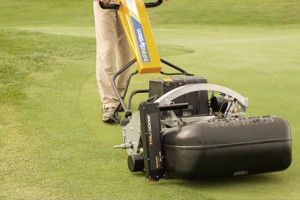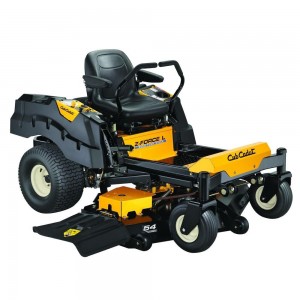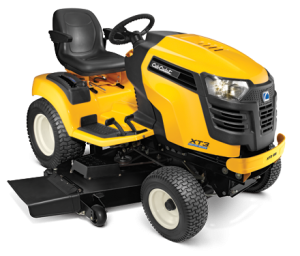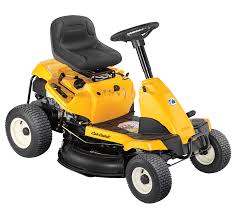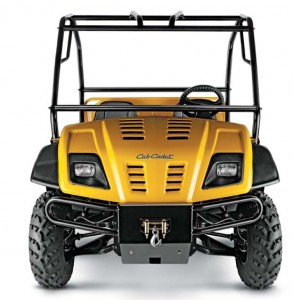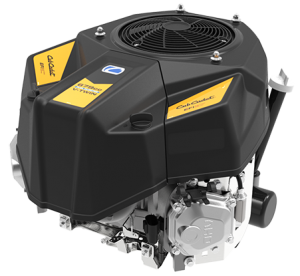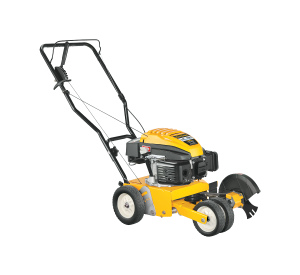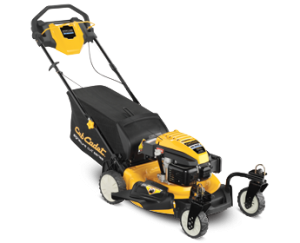We may not have self-driving cars yet, but we’re starting to see related technologies like lane departure warning systems and variable cruise control. Likewise, we’re seeing similar technology in mowers that point the way to automated landscaping. Cub Cadet’s TruEdge system uses advanced sensor technology to help golf course landscapers maintain greens while reducing overall maintenance, pointing the way toward better residential mowers.
Golf Courses: The Cutting Edge of Mowing Technology
When it comes to turf, golf courses are at a level far beyond normal landscaping. Not only do these green spaces need to be beautiful, they need to adhere to the original design for consistent play. A minor nuisance like a few weeds or a bald patch can keep golfers from playing their game as intended, and the smallest variations in grass height and density can alter game play. If the course is used for a professional game, the green should be at its best so that the only thing determining the final score is the players’ abilities.
Therein lies the problem: with such intensive maintenance, it’s easy for the shape of course features to change over time as landscapers make slight alterations to their mowing patterns. This phenomenon, known as “greens creep,” can cause the edges of greens and tees to move at a rate of one to four inches per month, requiring remarking, removing and eventually reshaping of the green’s edge. That’s where the TruEdge system comes in.
TruEdge
When Cub Cadet opened their Golf and Sports Turf division a couple years ago, they purchased several small specialty equipment makers to create a complete lawn care system. By combining these companies’ groundbreaking lawn care techniques with Cub Cadet’s own research and extensive resources, they’ve leapfrogged ahead of other manufacturers when it comes to cutting edge landscaping.
The TruEdge system originated with Precise Path Robotics, the same company behind the tracking system of the RG3 turf mower. TruEdge uses a metal wire buried in the soil for guidance, similar to current residential automated mowers. However, while residential systems can only use a wire buried near the surface, this professional system can sense the wire when buried at a depth of 10-12 inches. This greatly reduces the chance of damage, letting the operator mow over the exact same area over several years. To make the line visible to the system’s sensor at that depth, a quick coupling transmitter is attached to the line to energize it when it’s time to mow.
Installation starts by marking off the correct placement of the green on the course. The area is edged to create a visible border, then a standard cable trencher is used to lay down the sensor wire across this border. Overall, this is no more intensive than a single greens correction.
The TruEdge detector can attach to any turf mower regardless of brand or size, so operators can gain the benefits of this system without having to buy all new equipment. It uses a sensor that is lined up with the outer edge of the reel and a multicolor display that can be mounted within easy view of the operator.
Reading the display is simple: the display has two arrows and a center line. LEDs light up across the display to show the mower’s position relative to the wire. Once the operator has the mower lined up correctly, a row of blue LEDs light up over the center line. This lets even inexperienced operators mow against the same edge time after time to maintain the course and eliminate the need for corrective landscaping.
The Future
For course operators, the TruEdge system is a bargain thanks to the amount of work it saves. While this system with its bulky, high sensitivity sensor may be out of reach of regular buyers for some time, it points the way to major improvements in landscaping automation.
The depth of the wire places it in an area that is below the frost line in most areas, and the only activity likely to interrupt the path of the wire is from digging post holes or doing utility work. It also doesn’t require special equipment to installation, and the sensor is accurate enough to all but eliminate trimming around walls and other obstacles.
Getting Parts for Your Cub Cadet
You might not be able to get a TruEdge for your mower, but you can still get everything else for your Cub Cadet equipment at Cubparts.com. We’re a certified dealer for Cub Cadet and their manufacturing partners, so we’re able to carry parts for everything from the smallest string trimmer to the biggest commercial ZTR. Best of all, we can ship your order to any address in the U.S. and Canada.

